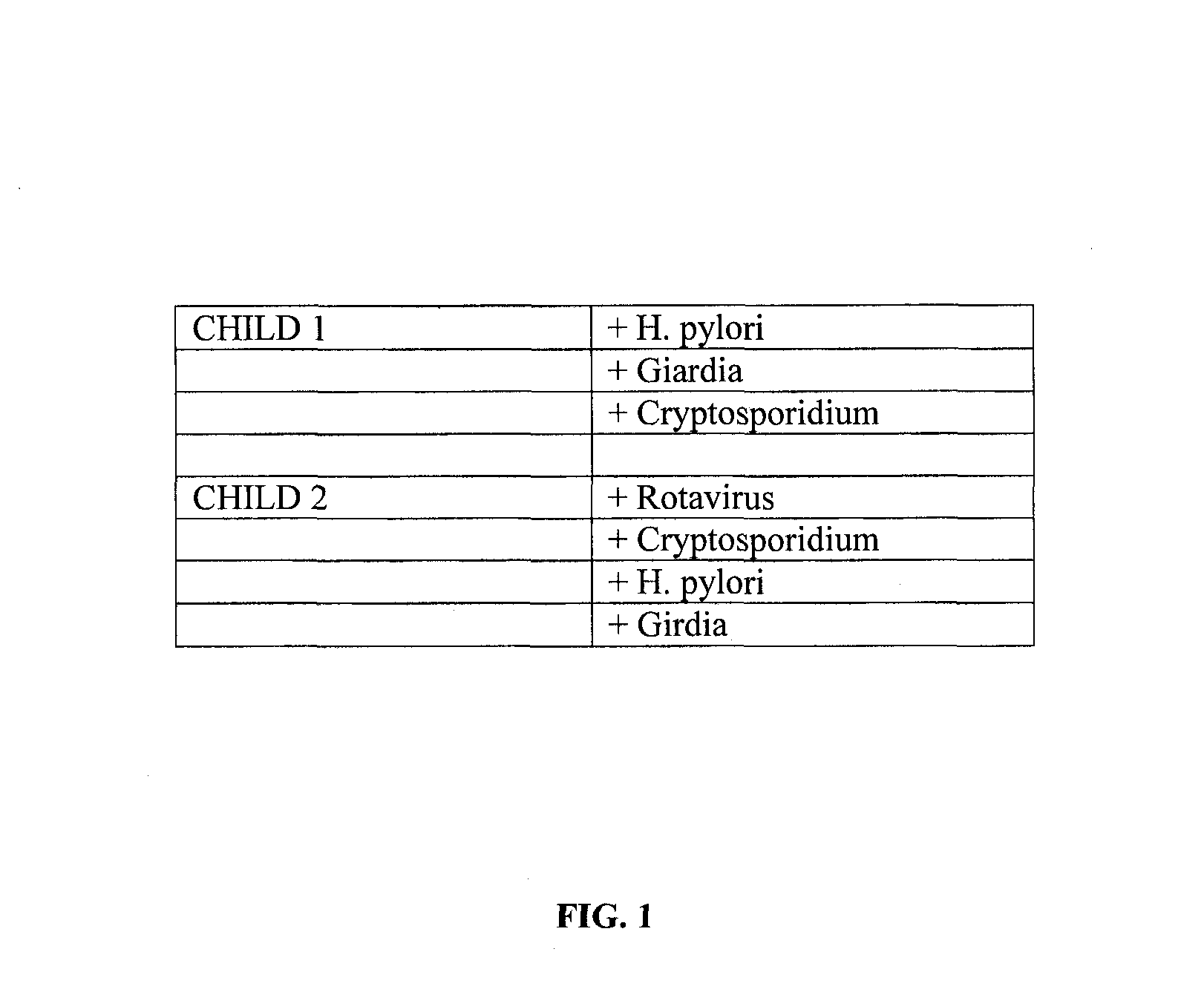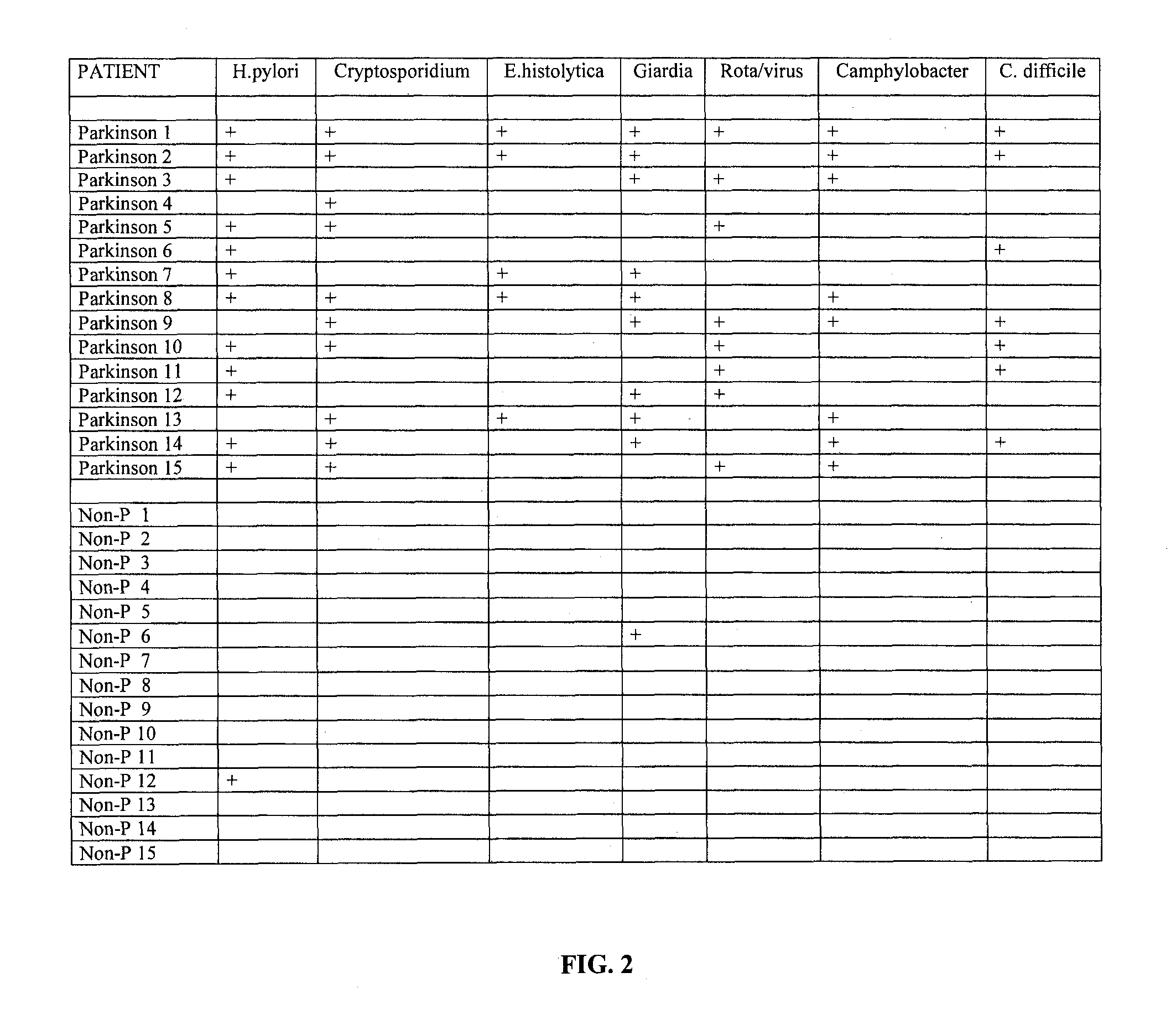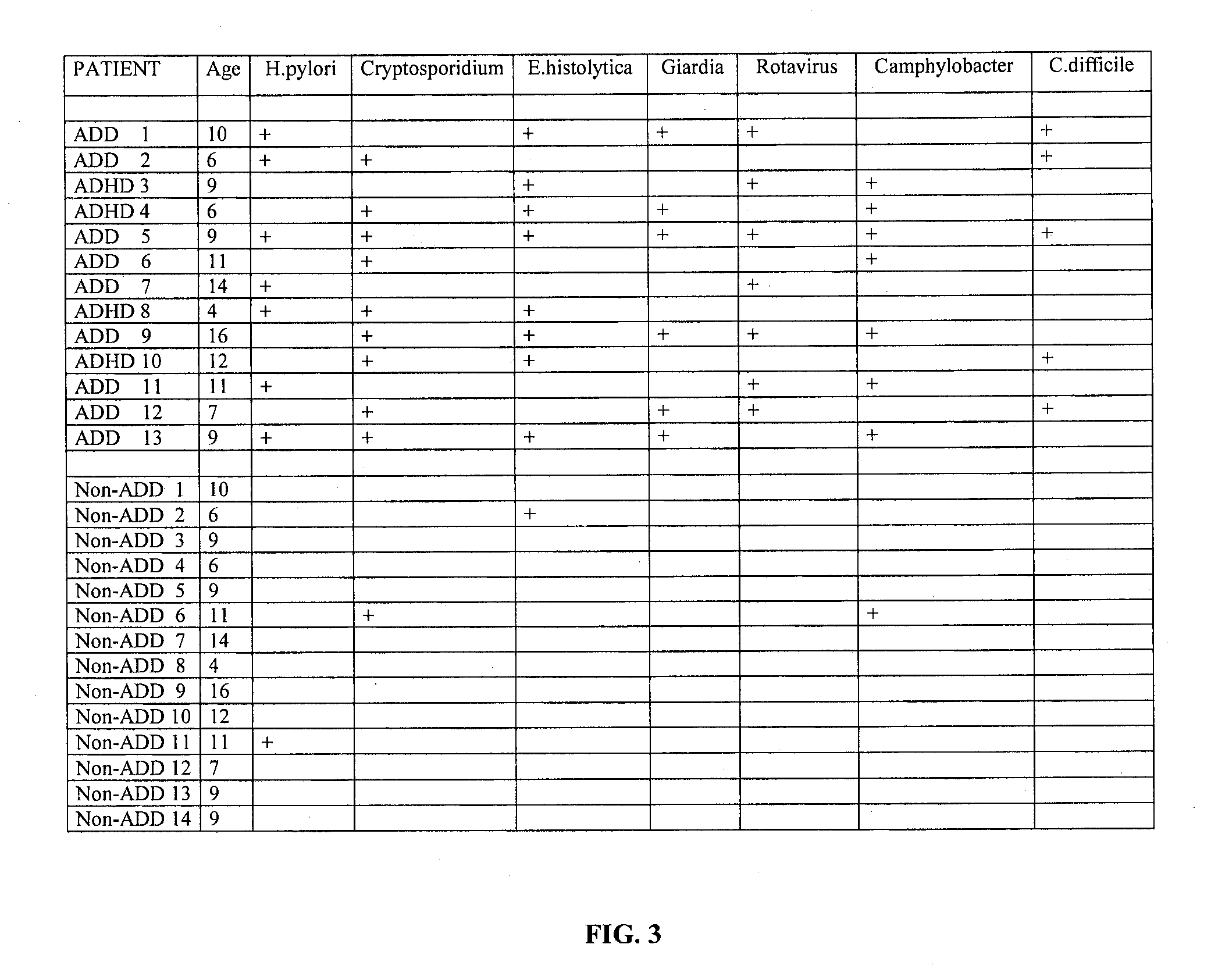Methods for diagnosing pervasive development disorders, dysautonomia and other neurological conditions
- Summary
- Abstract
- Description
- Claims
- Application Information
AI Technical Summary
Benefits of technology
Problems solved by technology
Method used
Image
Examples
case 1
[0030]Stool sample were collected from two children diagnosed as having Familial Dysautonomia. The stool samples were analyzed for the presence of pathogens. As shown by the table in FIG. 1, the stool sample of Child 1 tested positive for H. pylori, Giardia, and Cryptosporidium. Further, the stool sample of Child 2 tested positive for H. pylori, Giardia, Cryptosporidium and Rotavirus.
case 2
[0031]Stool samples were collected from 15 individuals diagnosed as having Parkinson's disease. The stool samples were analyzed for the presence of pathogens. Further, stool samples were collected from an additional 15 individuals who were not diagnosed as having Parkinson's disease, nor having known familial association with Parkinson's or known GI conditions. These stool samples were also analyzed for the presence of pathogens.
[0032]The table in FIG. 2 illustrates the result of this study. As shown, the stools of each of the 15 individuals diagnosed as having Parkinson's disease tested positive for various pathogens including H. pylori, Cryptosporidium, E. hystolytica, Giardia, Rotavirus, Camphylobacter, and / or C. difficile. On the other hand, virtually all the stools of each of the 15 individuals not diagnosed as having Parkinson's disease tested negative for such pathogens.
case 3
[0033]Stool samples were collected from 13 children diagnosed as having either ADD or ADHD and analyzed for the presence of pathogens. Further, stool samples were collected from an additional 14 children not diagnosed as having ADD or ADHD and analyzed for the presence of pathogens.
[0034]The table in FIG. 3 illustrates the result of this study. As shown, the stools of each of the 13 children diagnosed as having either ADD or ADHD tested positive for various pathogens including as H. pylori, Cryptosporidium, E. hystolytica, Giardia, Rotavirus, Camphylobacter, and / or C. difficile. On the other hand, virtually all the stools of each of the 14 children not diagnosed as having ADD or ADHD tested negative for such pathogens.
PUM
 Login to View More
Login to View More Abstract
Description
Claims
Application Information
 Login to View More
Login to View More - R&D
- Intellectual Property
- Life Sciences
- Materials
- Tech Scout
- Unparalleled Data Quality
- Higher Quality Content
- 60% Fewer Hallucinations
Browse by: Latest US Patents, China's latest patents, Technical Efficacy Thesaurus, Application Domain, Technology Topic, Popular Technical Reports.
© 2025 PatSnap. All rights reserved.Legal|Privacy policy|Modern Slavery Act Transparency Statement|Sitemap|About US| Contact US: help@patsnap.com



